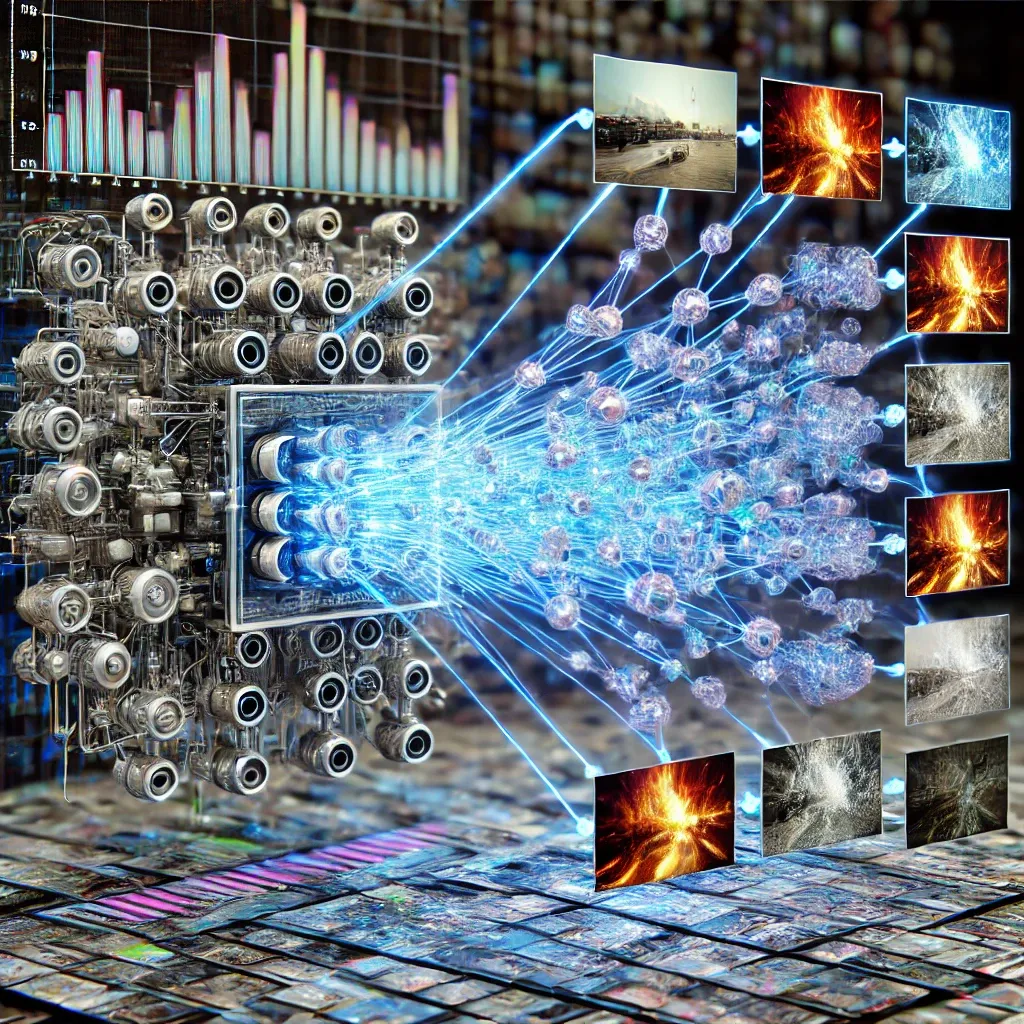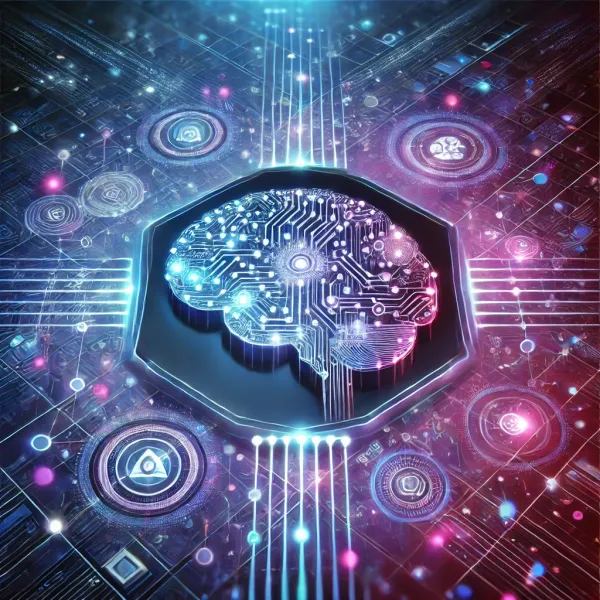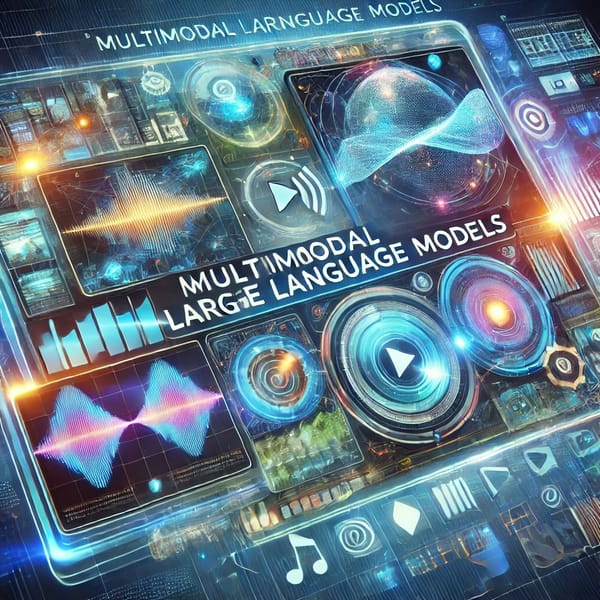Understanding Transformer Models for Video Generation
Discover how transformer models are revolutionizing video generation, allowing machines to create realistic and coherent video content by understanding the intricacies of time, context, and visual patterns.

Introduction
In recent years, transformer models have taken the field of artificial intelligence by storm. Initially designed for natural language processing (NLP) tasks, they have since found applications in a variety of domains, including computer vision and, more recently, video generation. Transformer models, with their ability to understand and process sequential data, have proven to be incredibly effective at generating not only text but also images and videos. This blog post aims to dive deep into how transformer models work for video generation, the challenges they address, and the future of this technology.
What are Transformer Models?
Before delving into video generation, it's essential to understand what transformer models are and why they are so powerful. Transformer models, introduced by Vaswani et al. in their groundbreaking paper "Attention is All You Need," have revolutionized the way we approach sequential data processing. Unlike traditional recurrent neural networks (RNNs), transformers rely on a mechanism called "self-attention" to capture dependencies between different parts of the input data.
Self-Attention Mechanism
The self-attention mechanism allows transformers to weigh the importance of different elements in the input sequence relative to each other. This is particularly useful for tasks where understanding the context is crucial. In NLP, for example, the meaning of a word often depends on its context within a sentence. The self-attention mechanism enables the model to consider the entire sentence when interpreting each word.
The same concept applies to video data. In video, the meaning of a particular frame can depend heavily on the preceding and following frames. By using self-attention, transformer models can capture these temporal dependencies more effectively than traditional convolutional neural networks (CNNs) or RNNs.
Transformer Models in Video Generation
Video generation is a complex task that requires understanding both the spatial and temporal aspects of the data. Unlike image generation, where the model only needs to generate a single frame, video generation requires the model to produce a sequence of frames that are coherent both in terms of content and motion.
Spatial-Temporal Modeling
Transformer models are well-suited for video generation because they can model both spatial and temporal dependencies simultaneously. In the context of video, the spatial aspect refers to the visual content within each frame, while the temporal aspect refers to the changes that occur between frames. For a model to generate realistic videos, it must capture both aspects effectively.
To achieve this, transformer models used for video generation are often equipped with additional components that allow them to handle high-dimensional data. For example, some models use a combination of transformers and CNNs to process the spatial information in each frame while using the self-attention mechanism to model the temporal dependencies.
Input Representation
One of the challenges in video generation is how to represent the input data. Videos are typically represented as sequences of frames, with each frame being a high-dimensional image. Directly feeding raw pixel values into a transformer model is computationally expensive and inefficient. Instead, various approaches have been proposed to reduce the dimensionality of the input data.
One common approach is to use pre-trained CNNs to extract features from each frame before feeding them into the transformer model. These features capture the essential visual information in a compact form, making it easier for the transformer to process. Another approach is to use vector quantization, where the video frames are encoded into discrete tokens, similar to how words are represented in NLP tasks.
Generating Coherent and Realistic Videos
Generating realistic and coherent videos is not just about producing individual frames; it’s about ensuring that these frames flow smoothly from one to the next. This requires the model to understand the dynamics of motion and the relationship between objects over time.
Modeling Motion
Motion modeling is one of the most challenging aspects of video generation. Unlike still images, videos have an additional dimension of time, which introduces the concept of motion. For a video to be realistic, the generated frames must not only be visually coherent but also follow a logical sequence of motion.
Transformer models tackle this challenge by leveraging their ability to model long-range dependencies. By applying the self-attention mechanism across both the spatial and temporal dimensions, the model can capture how objects move and change over time. This allows it to generate sequences of frames that depict smooth and natural motion.
Some advanced models also incorporate motion-specific modules that predict the optical flow between frames. Optical flow is a technique used to estimate the motion of objects between consecutive frames. By integrating this information into the transformer model, it can better understand and predict how objects should move in the generated video.
Handling Long Videos
Another challenge in video generation is handling long videos. As the length of the video increases, so does the complexity of modeling the temporal dependencies. Traditional transformer models have a quadratic time complexity with respect to the input sequence length, making them impractical for generating long videos.
To address this issue, researchers have developed various strategies to reduce the computational complexity of transformers in the context of video generation. One such approach is the use of sparse attention, where the model only attends to a subset of the input sequence at each layer. This reduces the overall computational burden while still capturing the essential dependencies in the data.
Another approach is to use hierarchical transformers, where the video is divided into smaller segments, and each segment is processed independently before being combined to form the final output. This allows the model to handle longer sequences without running into memory or computational limitations.
Training Transformer Models for Video Generation
Training transformer models for video generation is a complex process that requires large amounts of data and computational resources. The success of these models depends heavily on the quality of the training data and the design of the training pipeline.
Data Preprocessing
Data preprocessing is a critical step in training transformer models for video generation. Since videos are high-dimensional data, it is important to preprocess them in a way that reduces the computational load while preserving the essential information.
One common preprocessing step is to downscale the video frames to a lower resolution. This reduces the size of the input data, making it easier to process. Another step is to extract key frames or regions of interest, which can help the model focus on the most important parts of the video.
In addition to these steps, data augmentation techniques are often used to increase the diversity of the training data. This can include techniques such as random cropping, flipping, and rotation, which help the model generalize better to different types of videos.
Loss Functions
The choice of loss function is crucial in training transformer models for video generation. Since the goal is to generate realistic and coherent videos, the loss function must be designed to encourage these properties.
One common loss function used in video generation is the adversarial loss, which is derived from generative adversarial networks (GANs). In this setup, the transformer model acts as the generator, while a separate discriminator model is trained to distinguish between real and generated videos. The generator is trained to fool the discriminator, resulting in more realistic video outputs.
In addition to adversarial loss, other loss functions such as perceptual loss and motion consistency loss can be used to further improve the quality of the generated videos. Perceptual loss measures the similarity between the generated frames and the real frames in a feature space, encouraging the model to produce visually similar outputs. Motion consistency loss, on the other hand, ensures that the generated frames follow a smooth and logical sequence of motion.
Applications of Video Generation
The ability to generate realistic videos has a wide range of applications, from entertainment and media to healthcare and autonomous systems. Here are some of the key applications of video generation using transformer models:
Content Creation
One of the most obvious applications of video generation is in content creation. With transformer models, it is possible to generate high-quality videos from scratch, which can be used in movies, video games, and virtual reality experiences. This opens up new possibilities for creative professionals, allowing them to produce content that would otherwise be impossible or too expensive to create.
Video Editing
Transformer models can also be used for video editing tasks, such as inpainting, super-resolution, and style transfer. Inpainting involves filling in missing or corrupted parts of a video, while super-resolution refers to enhancing the resolution of a low-quality video. Style transfer, on the other hand, involves applying the visual style of one video to another.
These tasks require the model to understand the content of the video and generate new frames that are consistent with the existing ones. Transformer models, with their ability to model both spatial and temporal dependencies, are well-suited for these tasks.
Medical Imaging
In the healthcare sector, video generation can be applied to medical imaging tasks, such as generating synthetic medical videos for training and diagnosis. For example, transformer models can be used to generate ultrasound videos or MRI scans, which can be used to train medical professionals or test new algorithms.
Autonomous Systems
Autonomous systems, such as self-driving cars and drones, rely heavily on video data to understand and navigate their environment. Video generation can be used to simulate different scenarios, allowing these systems to be trained and tested in a controlled environment. This can help improve the safety and reliability of autonomous systems before they are deployed in the real world.
Challenges and Future Directions
While transformer models have shown great promise in video generation, there are still several challenges that need to be addressed. One of the main challenges is the computational cost of training and deploying these models. Video data is high-dimensional, and processing it requires significant computational resources.
Another challenge is the quality of the generated videos. While transformer models can produce realistic videos, there is still room for improvement, particularly in terms of motion consistency and long-term coherence. Researchers are actively exploring new architectures and techniques to address these issues and push the boundaries of what is possible with video generation.
Looking to the future, we can expect transformer models to continue evolving and improving. As computational power increases and new techniques are developed, we may see even more sophisticated models that can generate high-quality videos in real-time. This could have a profound impact on a wide range of industries, from entertainment and media to healthcare and autonomous systems.
Conclusion
Transformer models have revolutionized the field of AI, and their application to video generation is no exception. By leveraging their ability to model both spatial and temporal dependencies, these models can generate realistic and coherent videos that were previously unimaginable. While there are still challenges to overcome, the potential applications of this technology are vast and exciting. As we continue to push the boundaries of what is possible with transformer models, the future of video generation looks incredibly promising.
This blog post provides an overview of how transformer models work for video generation, from the underlying mechanisms to the challenges and applications. As this technology continues to evolve, it will be fascinating to see how it shapes the future of video content creation and beyond.




